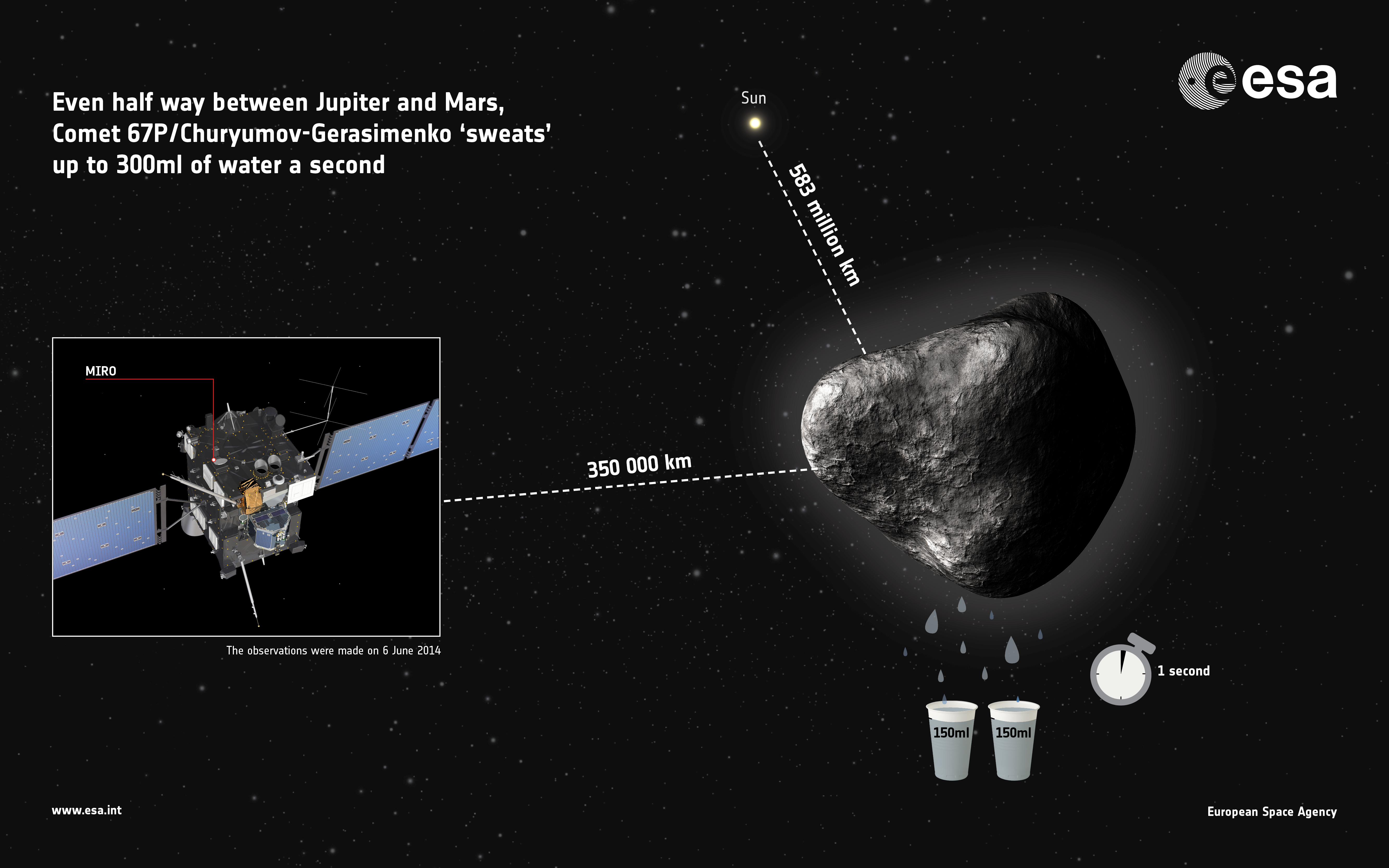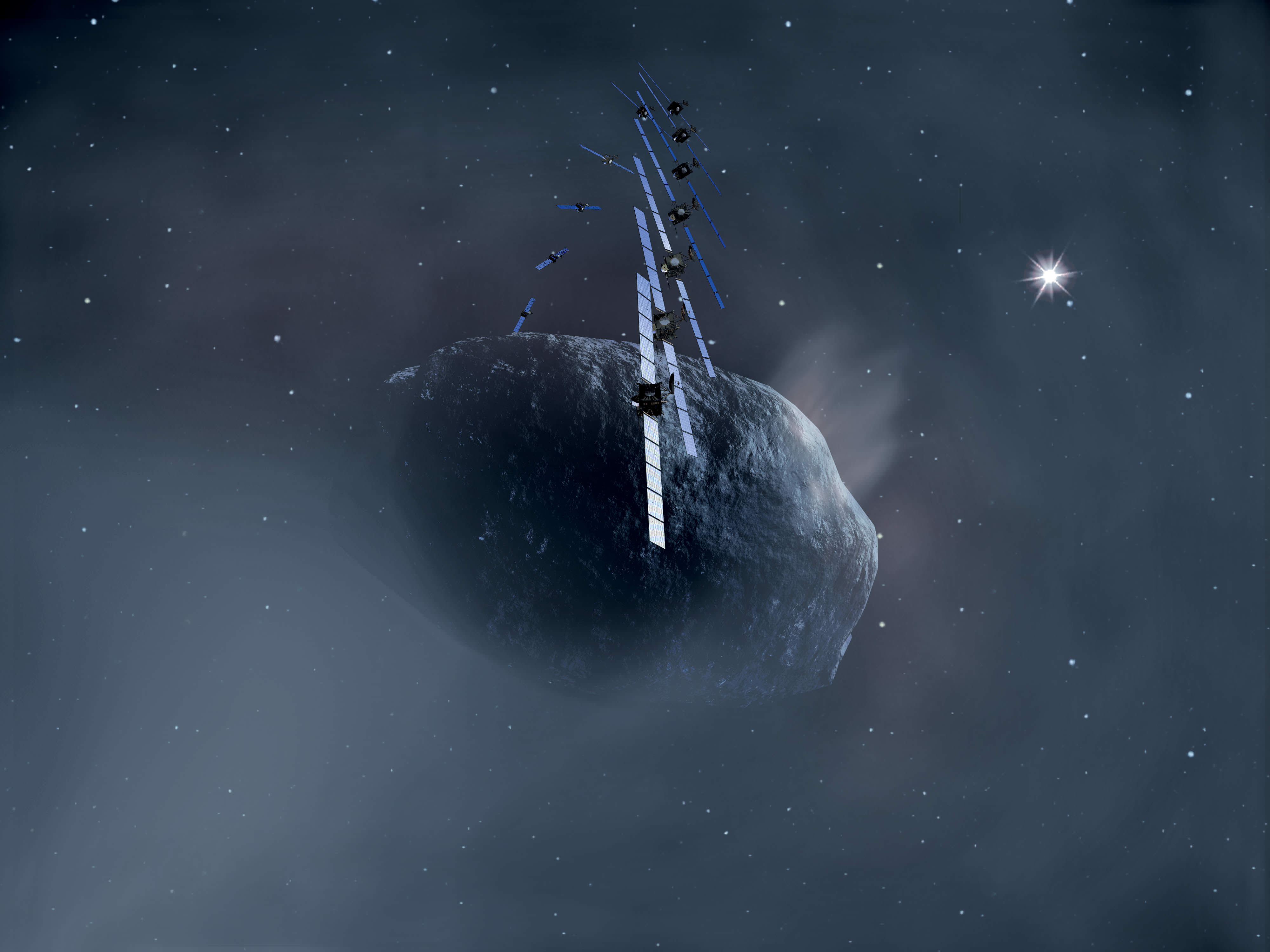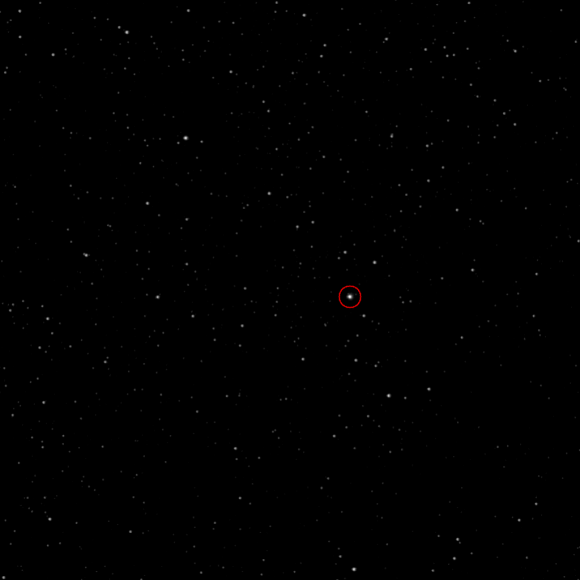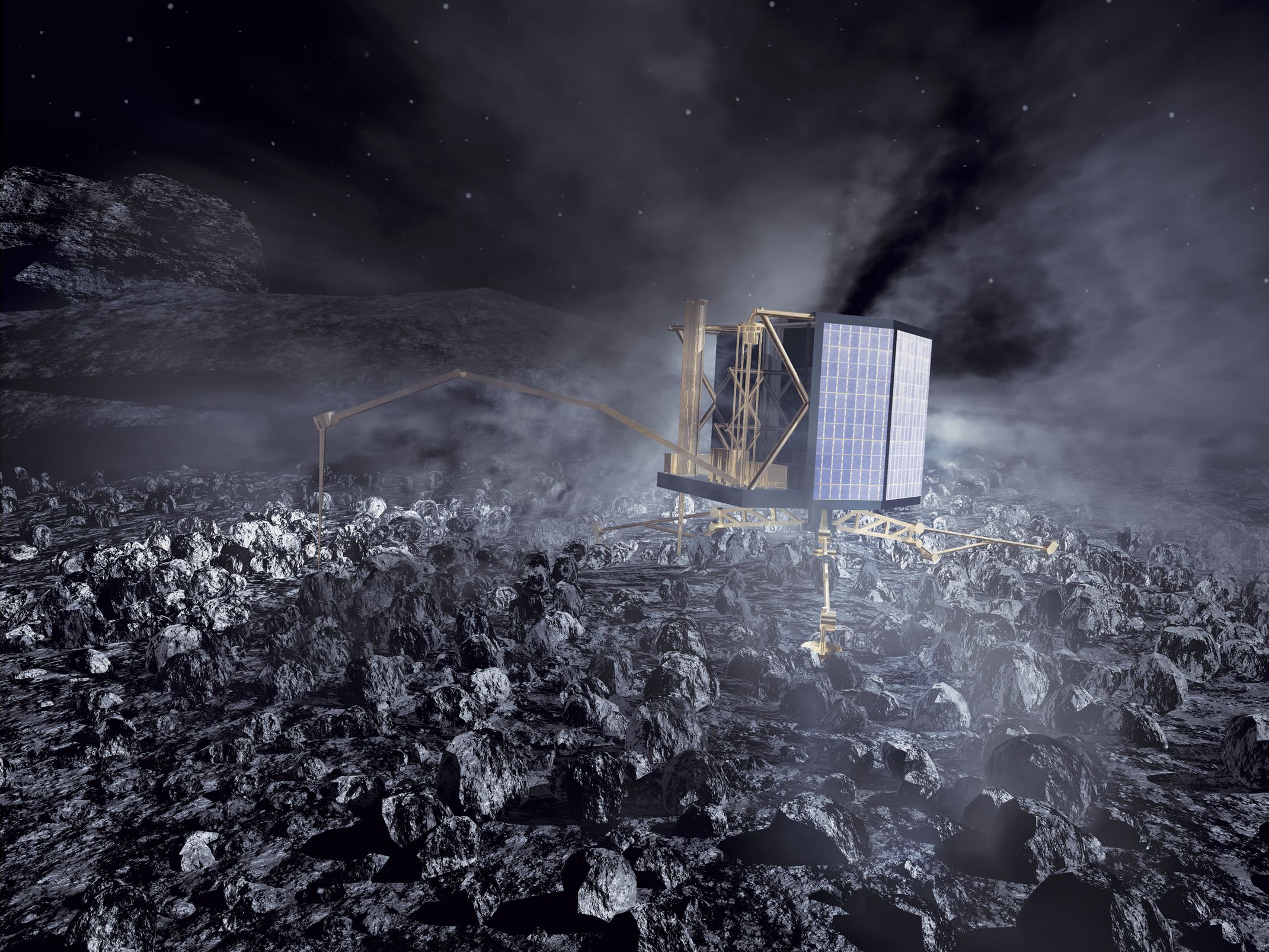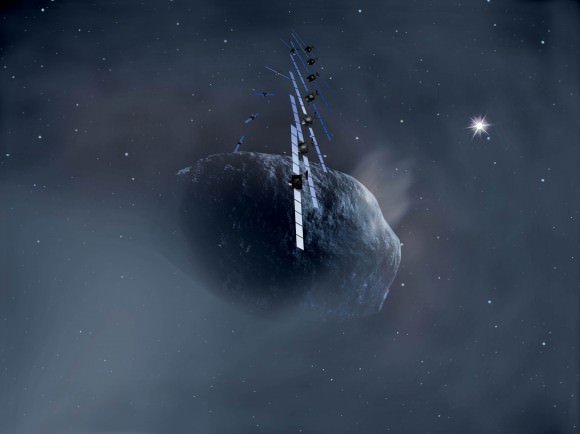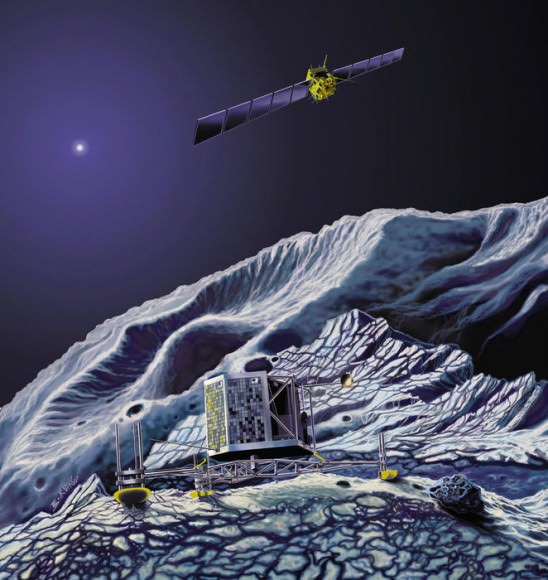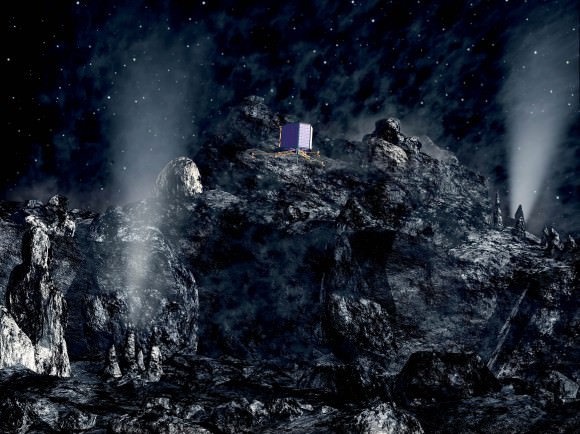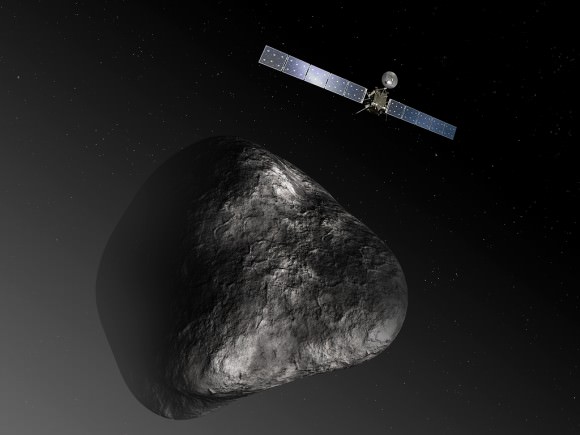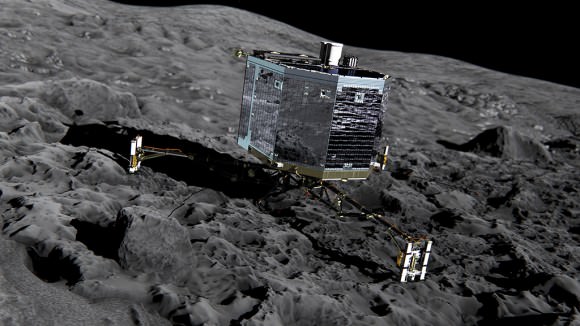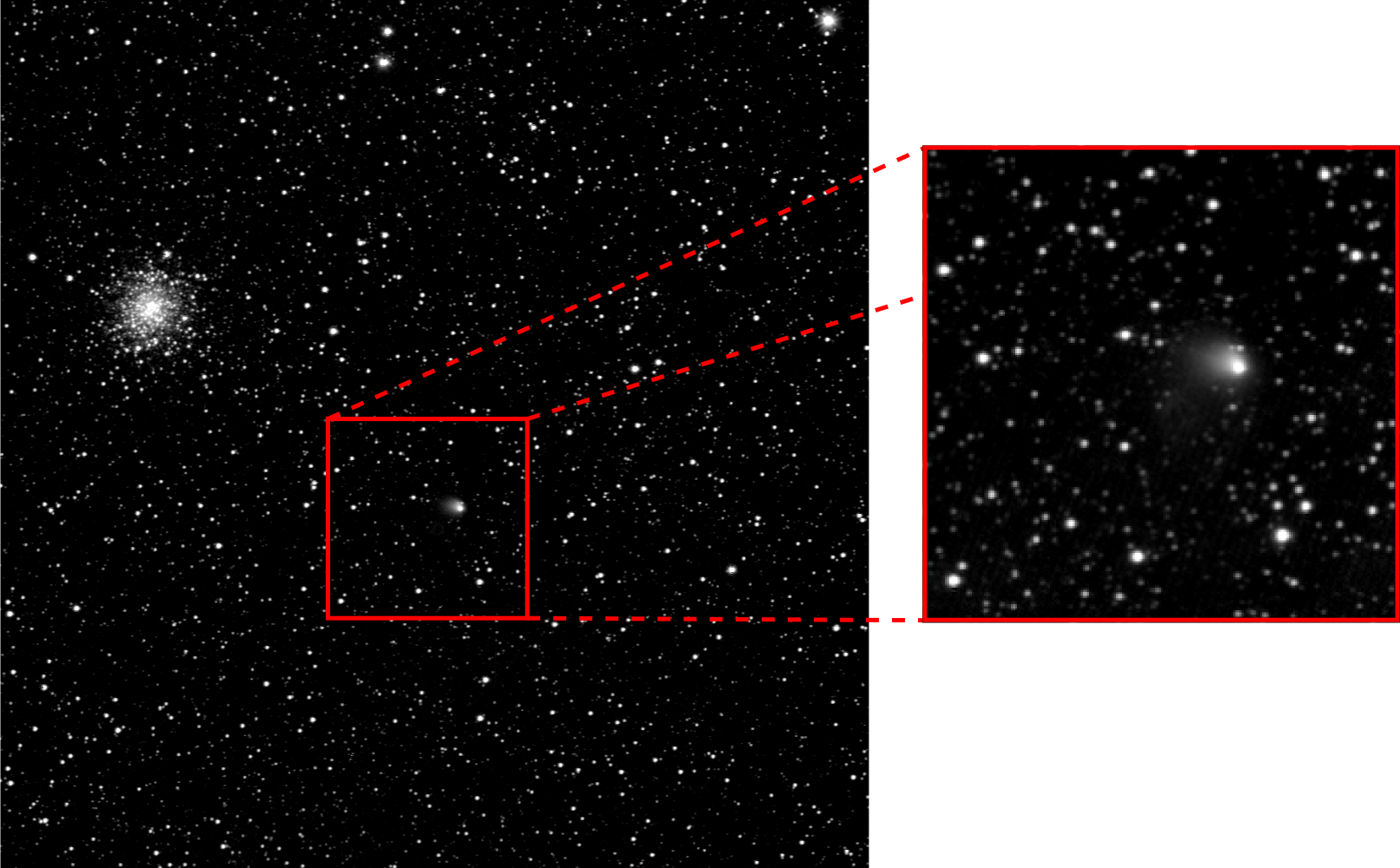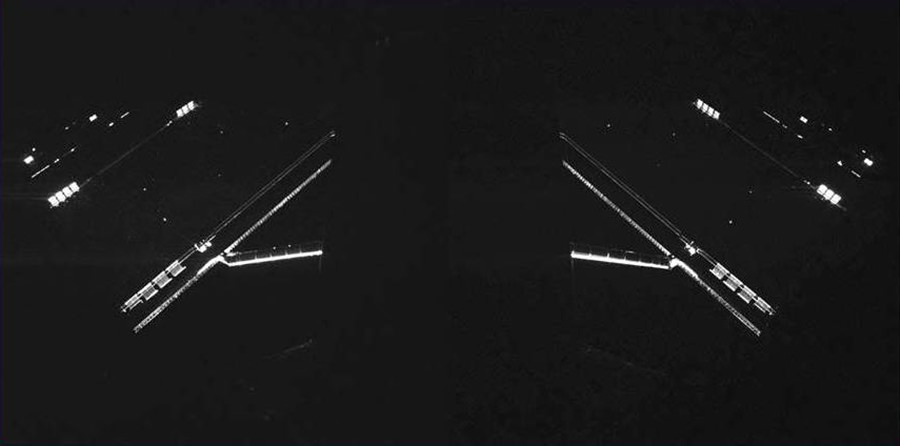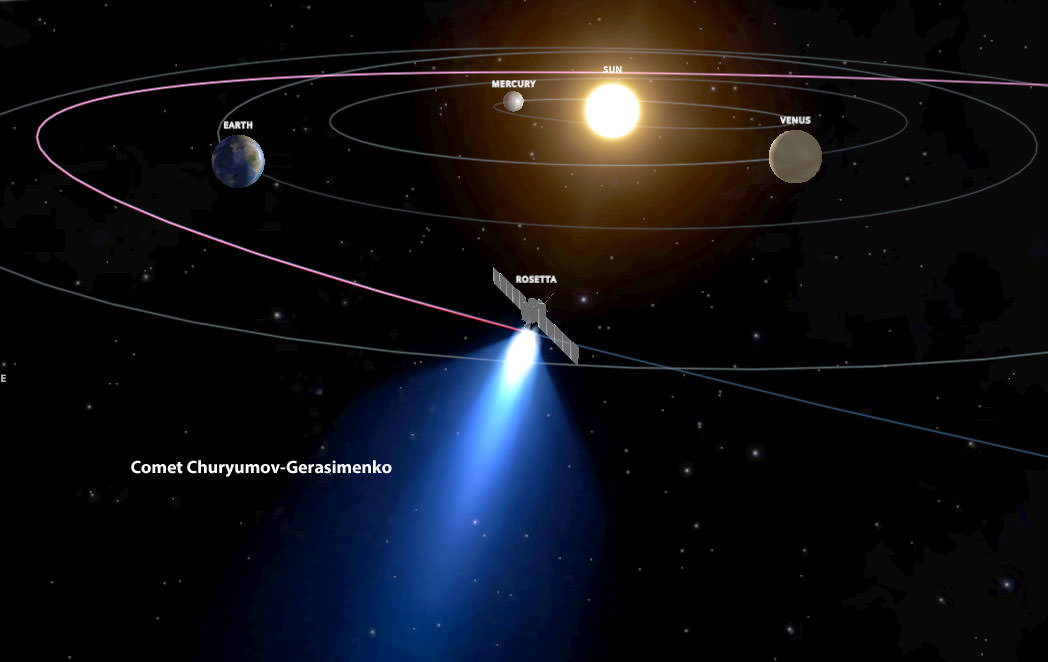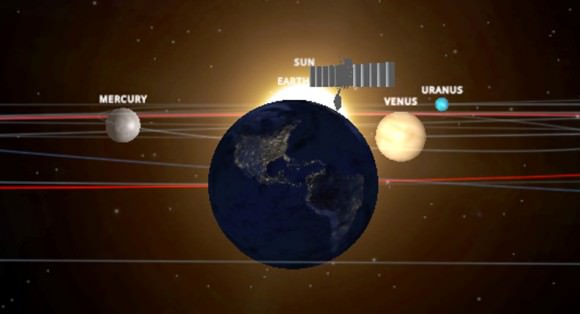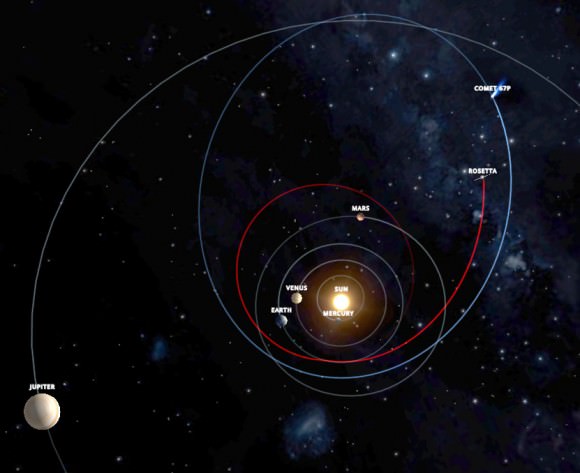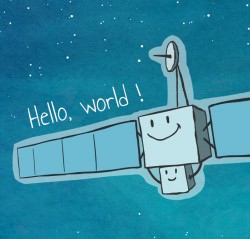Feeling thirsty? If you could somehow capture the water vapor from Rosetta’s comet, you would have the equivalent of two water glasses every second. That’s more than scientists expected given that Comet 67P/Churyumov–Gerasimenko is still screaming into the inner solar system at more than double the distance from Mars to the Sun.
“We always knew we would see water vapor outgassing from the comet, but we were surprised at how early we detected it,” stated Sam Gulkis, the instrument’s principal investigator at NASA’s Jet Propulsion Laboratory in California.
“At this rate, the comet would fill an Olympic-size swimming pool in about 100 days. But, as it gets closer to the Sun, the gas production rate will increase significantly. With Rosetta, we have an amazing vantage point to observe these changes up close and learn more about exactly why they happen.”
Comets are sometimes called “dirty snowballs” because they are collection of debris and ices. From their origin points in the outer solar system, occasionally one will be pushed towards the Sun.
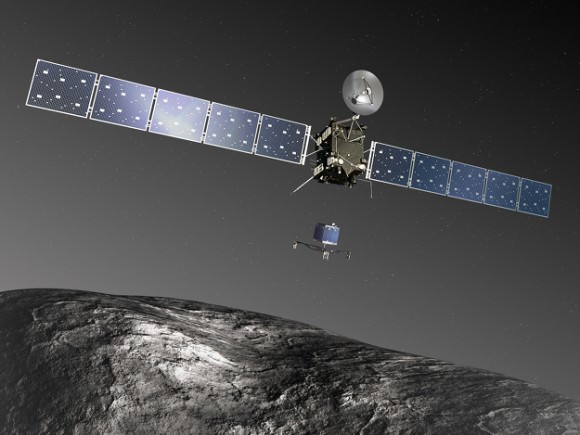
As it gets closer, the ices bleed off and the comet develops an envelope of gases that eventually, with the Sun’s help, will turn into a tail. Some of the major “volatiles” include water, carbon monoxide, methanol and ammonia.
The observations were made on June 6 by an instrument called the Microwave Instrument for Rosetta Orbiter (MIRO), taken when the spacecraft was about 218,000 miles (350,000 km) away from its target. MIRO is trying to figure out the relative ratios of the ingredients of the coma, and will keep following along with the comet as it makes its closest approach to the sun in August 2015.
Rosetta, meanwhile, will get up close to Comet 67P/Churyumov–Gerasimenko by August and if all goes well, subsequently deploy a lander called Philae to check out the surface of the comet.
Source: European Space Agency

